Intro
Identify 7 key preeclampsia signs, including high blood pressure, proteinuria, and severe headaches, to ensure timely pregnancy care and prevent complications like eclampsia and placental abruption.
Preeclampsia is a pregnancy complication characterized by high blood pressure and often accompanied by significant amounts of protein in the urine. This condition can lead to serious complications for both the mother and the baby if left untreated. It is essential for pregnant women to be aware of the signs and symptoms of preeclampsia to ensure they receive prompt medical attention. The importance of recognizing these signs cannot be overstated, as early detection and treatment can significantly improve outcomes for both mother and child.
Preeclampsia affects a significant number of pregnancies worldwide, and its impact can be severe. It is a leading cause of maternal and fetal morbidity and mortality, making it crucial for expectant mothers to understand the risks and be vigilant about their health during pregnancy. By knowing the signs of preeclampsia, women can take an active role in their prenatal care, ensuring the best possible outcomes for their pregnancy. This awareness also underscores the importance of regular prenatal check-ups, where healthcare providers can monitor blood pressure and urine protein levels, key indicators of preeclampsia.
The signs of preeclampsia can sometimes be subtle, making it vital for pregnant women to be informed and proactive about their health. High blood pressure is a primary indicator, but other symptoms can include severe headaches, vision changes, and abdominal pain. Being aware of these signs enables women to seek medical help promptly, which is critical in managing the condition and preventing its progression to more severe forms, such as eclampsia. Understanding preeclampsia and its signs is the first step towards a healthier pregnancy, emphasizing the need for education and awareness among expectant mothers.
Preeclampsia Overview
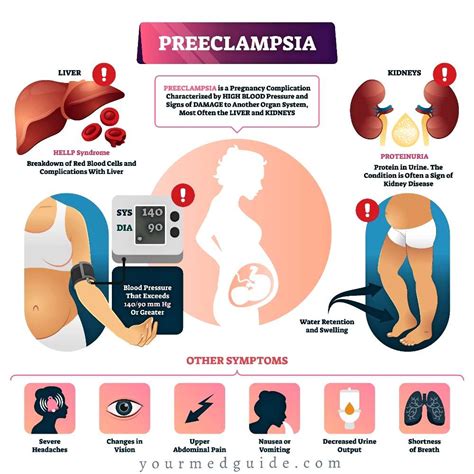
Risk Factors for Preeclampsia
Several factors can increase a woman's risk of developing preeclampsia. These include: - A first pregnancy - Carrying twins or other multiples - A history of high blood pressure or kidney disease - Obesity - Age 35 or older - A family history of preeclampsia Being aware of these risk factors can help women and their healthcare providers take a proactive approach to monitoring for signs of preeclampsia.Recognizing the Signs of Preeclampsia
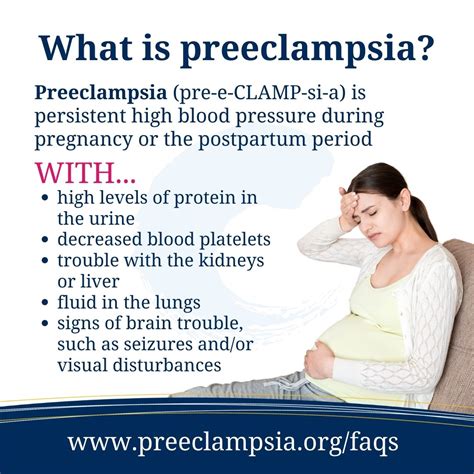
Diagnosing Preeclampsia
Diagnosing preeclampsia involves a combination of physical exams, medical history, and laboratory tests. Healthcare providers look for high blood pressure and protein in the urine, and they may also perform tests to assess liver and kidney function. In some cases, additional tests such as ultrasounds may be used to monitor the baby's well-being.Managing Preeclampsia
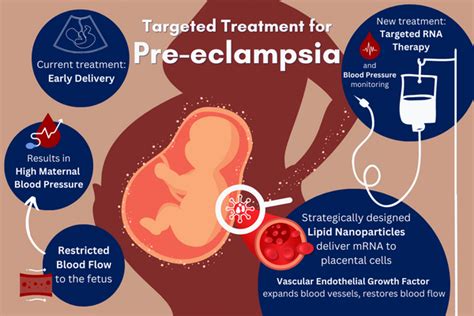
Treatment Options for Preeclampsia
Treatment for preeclampsia depends on the severity of the condition and how far along the pregnancy is. For women with mild preeclampsia, close monitoring of blood pressure and urine protein levels may be sufficient, along with lifestyle modifications such as rest and a healthy diet. In more severe cases, hospitalization may be necessary to closely monitor the mother and the baby and to administer medications as needed. In some instances, the decision may be made to deliver the baby early to prevent complications.Preventing Preeclampsia
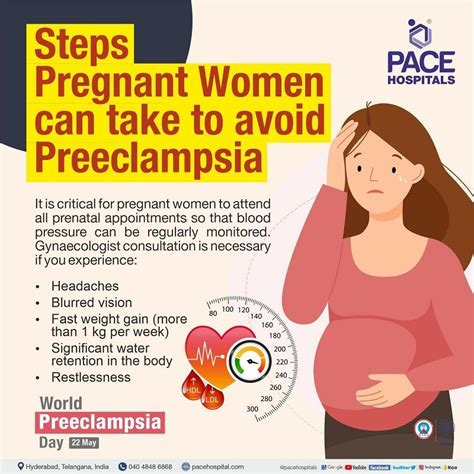
Lifestyle Changes to Reduce Risk
Making healthy lifestyle choices can help reduce the risk of developing preeclampsia. This includes: - Eating a diet rich in fruits, vegetables, and whole grains - Staying hydrated by drinking plenty of water - Engaging in regular, moderate physical activity - Managing stress through techniques such as meditation or deep breathing - Getting enough sleep each nightCoping with Preeclampsia
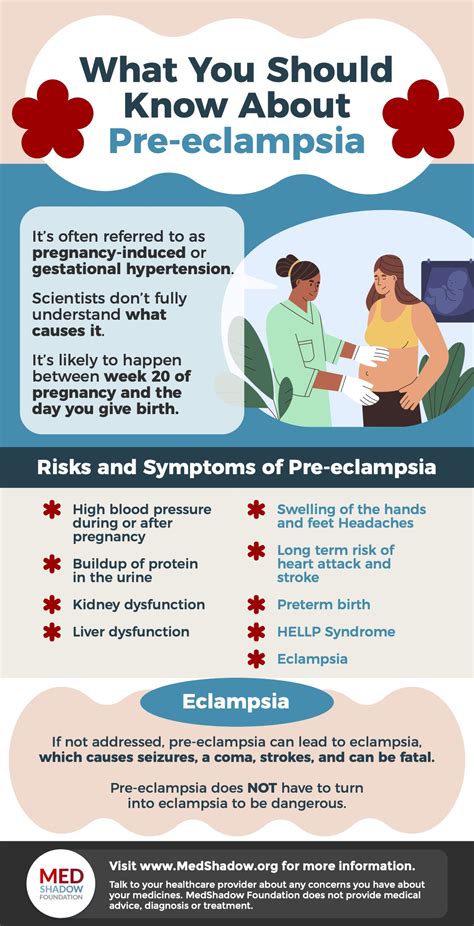
Emotional Support During Preeclampsia
Having emotional support is vital for women dealing with preeclampsia. This support can come from various sources, including: - Family and friends: Loved ones can provide practical help, such as with household chores, and emotional support. - Support groups: Joining a support group, either in-person or online, can connect women with others who are going through similar experiences. - Healthcare providers: The healthcare team can offer guidance, reassurance, and support throughout the diagnosis and treatment process.Long-term Effects of Preeclampsia
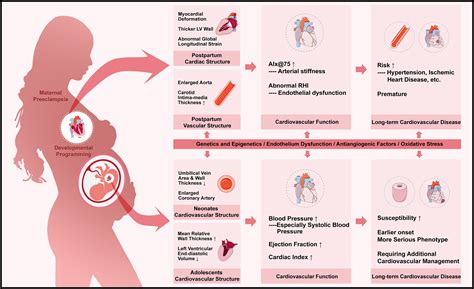
Follow-up Care After Preeclampsia
After a pregnancy complicated by preeclampsia, follow-up care is essential. This includes: - Regular health check-ups: To monitor for signs of high blood pressure and other potential complications. - Healthy lifestyle choices: Maintaining a healthy diet, exercising regularly, and managing stress can all help reduce the risk of future health problems. - Family planning: Discussing future pregnancy plans with a healthcare provider can help women understand their risks and make informed decisions.What are the primary signs of preeclampsia?
+The primary signs include high blood pressure, significant amounts of protein in the urine, severe headaches, vision changes, and abdominal pain.
How is preeclampsia diagnosed?
+Preeclampsia is diagnosed through a combination of physical exams, medical history, and laboratory tests, including blood pressure checks and urine tests for protein.
Can preeclampsia be prevented?
+While preeclampsia cannot be completely prevented, maintaining a healthy weight, following a balanced diet, and regular physical activity can reduce the risk.
In conclusion, being informed about preeclampsia and its signs is a crucial step in ensuring a healthy pregnancy. By understanding the risks, recognizing the symptoms, and knowing how to manage the condition, women can take an active role in their prenatal care. If you or someone you know is experiencing signs of preeclampsia, it is essential to seek medical attention promptly. Share this article with others to help spread awareness about preeclampsia and its importance in pregnancy care. Together, we can work towards healthier pregnancies and better outcomes for mothers and babies worldwide.
